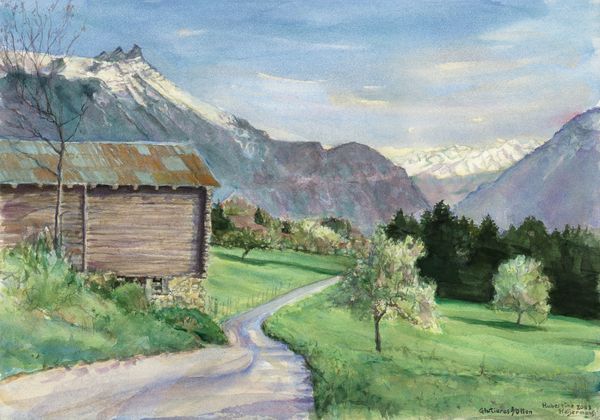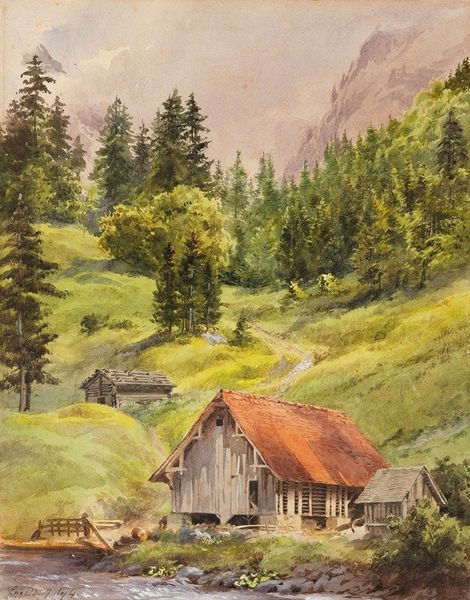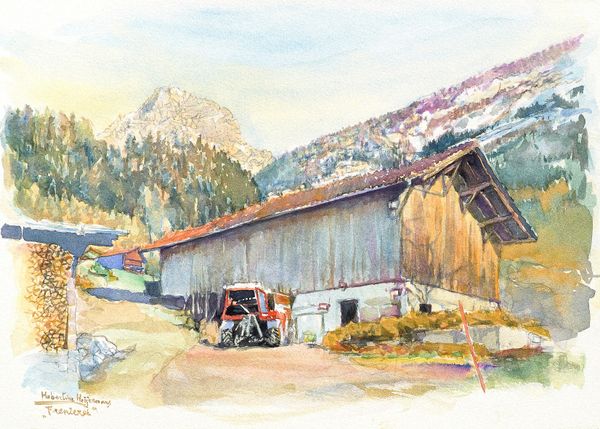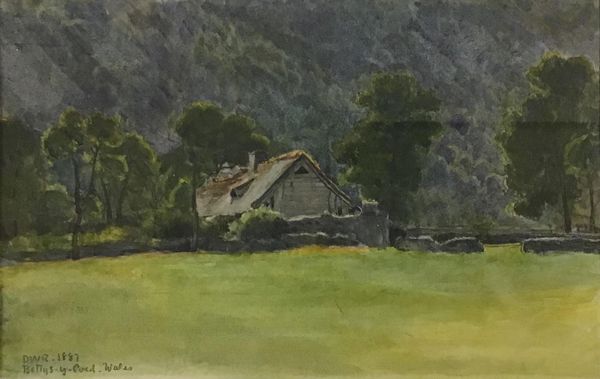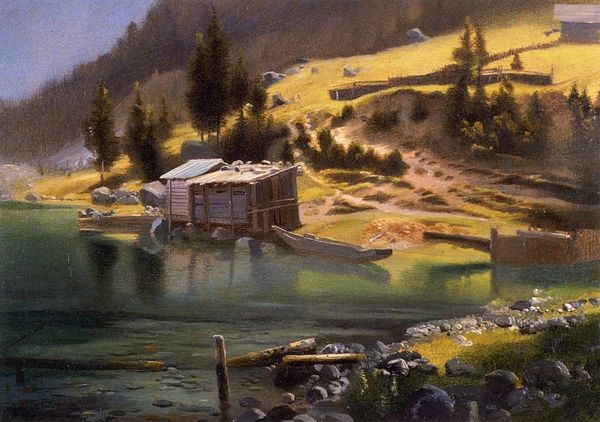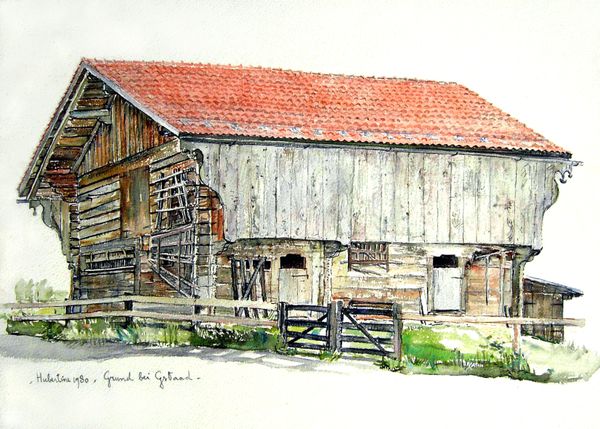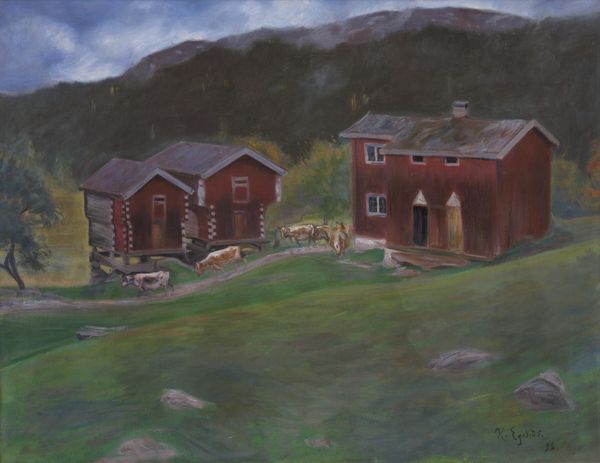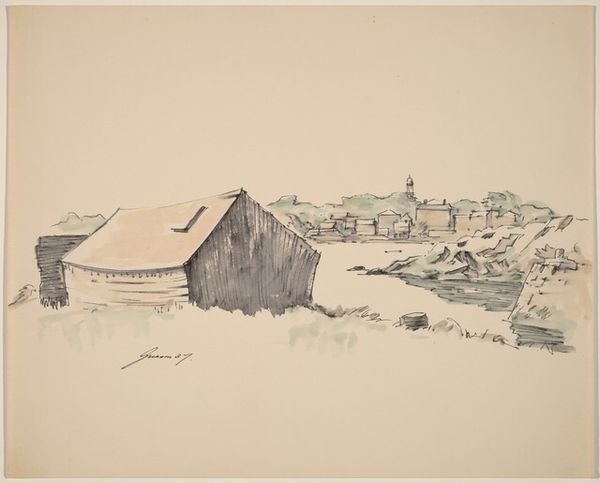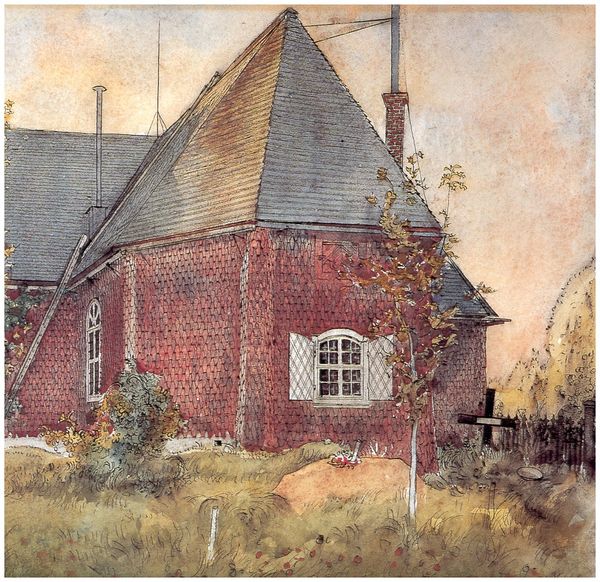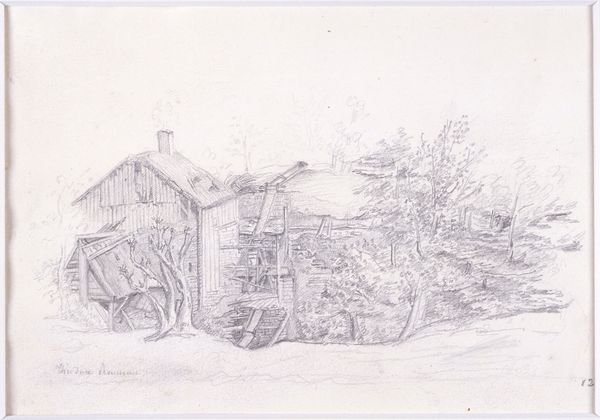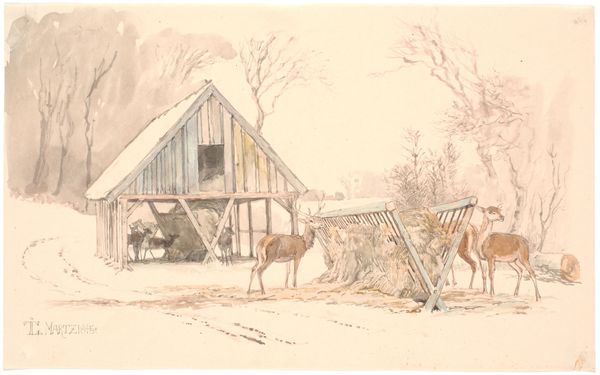
Dimensions: 38 x 54 cm
Copyright: Hubertine Heijermans,Fair Use
Curator: So, before us, we have Hubertine Heijermans' watercolor painting, "Mountain barn at 'Les Posses' above Gryon," created in 2003. It seems to reflect the styles of plein-air and post-impressionism. Editor: It evokes such a calm, rural scene. The colours are quite muted and I feel this slight touch of melancholy. Curator: Indeed. The barn dominates the center. Looking into its context, rural life in early 21st-century Switzerland existed as a nostalgic mirror to contemporary society, and became a form of pastoral escape. I can also say this type of setting may have had personal ties to Heijermans. Editor: Right, the work is deeply rooted in the picturesque – but who does that appeal to and why? Who are these images meant for? In light of modern farming practices that drastically affect landscape, does the romanticism it seems to encourage have consequences? Curator: Interesting point. Certainly, a critical gaze is warranted when dealing with depictions of rural life. Heijermans’ work emerged in a time where the reality of agrarian culture became increasingly precarious due to modernization. Editor: Precisely, so how much does it reflect what's actually there and who exactly is it meant to serve? There is definitely an emotional impact here, but there should also be an understanding of the social undercurrents at work. Even as just a watercolor sketch. Curator: I concur; her emphasis on capturing this specific barn speaks volumes about the contemporary longing for simpler times. The materiality itself - watercolor - adds another layer to this romantic notion. A fast way to make an emotional landscape painting as an observation, almost a note, or a study. Editor: Maybe this is why it has such a strong sense of being, yes, simple. Though, while it leans towards sentimentality, examining the setting within larger narratives and thinking critically is essential, specifically within the context of labor and class. Curator: Absolutely, that is critical thinking that allows the observer to reflect upon the historical, cultural, and socio-political undertones influencing the image. And, again, maybe why these types of imagery prevail even today. Editor: Which makes art viewing far from a passive experience.
Comments
No comments
Be the first to comment and join the conversation on the ultimate creative platform.
